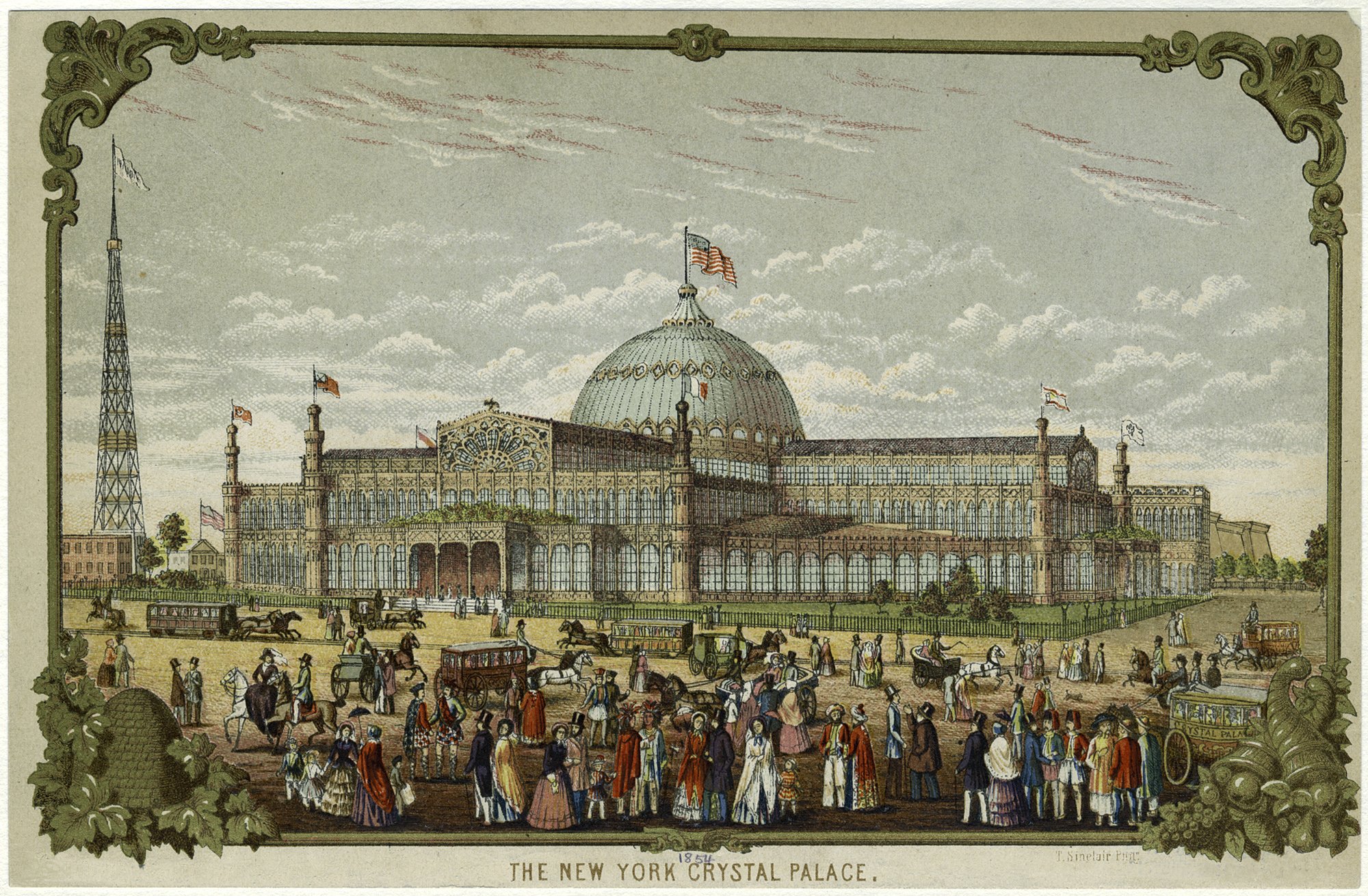
The New York City Crystal Palace
New York City, New York, 1853
Architect: Georg Carstensen (1812 - 1857), Karl Gildemeister (1820 - 1869)
One of the most admired conservatories of the 19th century was the Grand Crystal Palace in London. After just six months of its opening, it had attracted more than fourteen thousand exhibitors and six million visitors from around the world at a time when the entire population of London was less than three million. The success of the Crystal Palace inspired a new wave of conservatory building around the world, even after its decimation in the great fire of 1936; one of which is the Crystal Palace of New York.
In 1853, a group of New York politicians and businessmen began planning America’s own international exhibition, the Exhibition of the Industry of All Nations. They selected architects Georg Carstensen (1812-1857) of Denmark and Karl Gildemeister (1820-1869) of Germany to design and construct a grand structure to be made entirely of iron and glass. It was a marriage of contemporary engineering and classical precedent; their architectural template was the square Greek cross. As Alan and Nancy describe it in their book, The Conservatory: Gardens Under Glass, “...with triangular “wings” filling the four inside corners, the octagonal building covered almost the entire lot. It was one of the largest buildings most New Yorkers had ever seen. At the centre of the cross rose a dome a hundred feet in diameter, larger and taller than even the rotunda of the US Capitol.”
While the structure was to be made entirely of iron and glass, wood was used to build some sections of the roof and floors. To provide shade in the summer months, they coated the glass with enamel in various colors. The structural tracery was rendered in cream and accented with reds, blues, yellows, and gold and at the center, the delicately tinted dome glittered with rows of decorative windows.
“[It is] unsurpassed anywhere for beauty… an original, esthetic, perfectly proportioned American edifice - one of the few of modern times not beneath old times…”
While both the Crystal Palace of England and New York had burned down in a fire, they also introduced the use of standardized, prefabricated parts as a way to make construction quick and economical, but New York’s structure also previewed an innovation destined to radically reshape the skylines of twentieth-century cities: a featured “safety elevator” designed by Elisha Otis (1811-1861) that would not fall if the cable broke, thus making it possible the heights of the modern skyscraper.
Photo Credits: The Miriam and Ira D. Wallach Division of Art, Prints and Photography: Photography Collection, New York Public Library (Heading Image)

